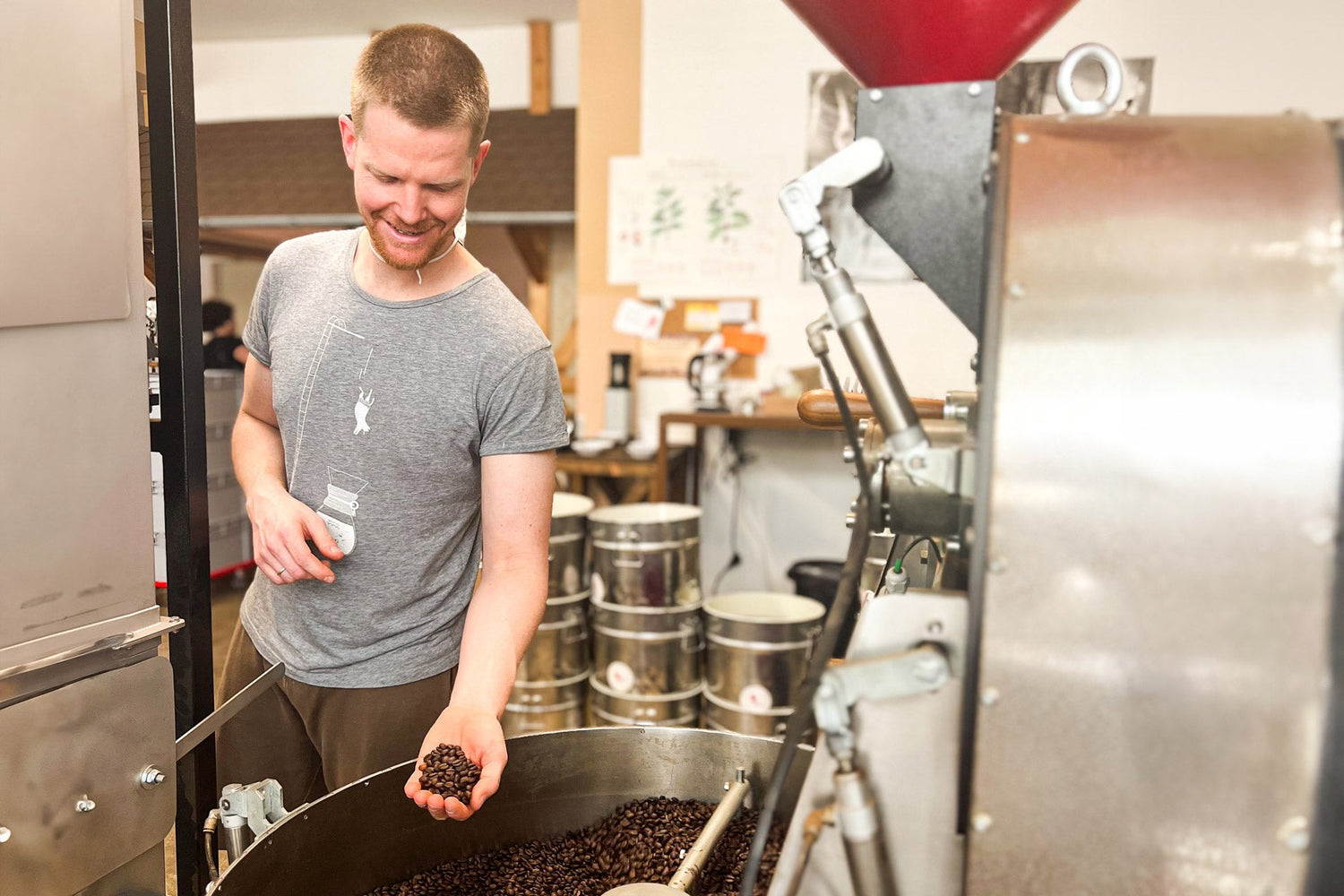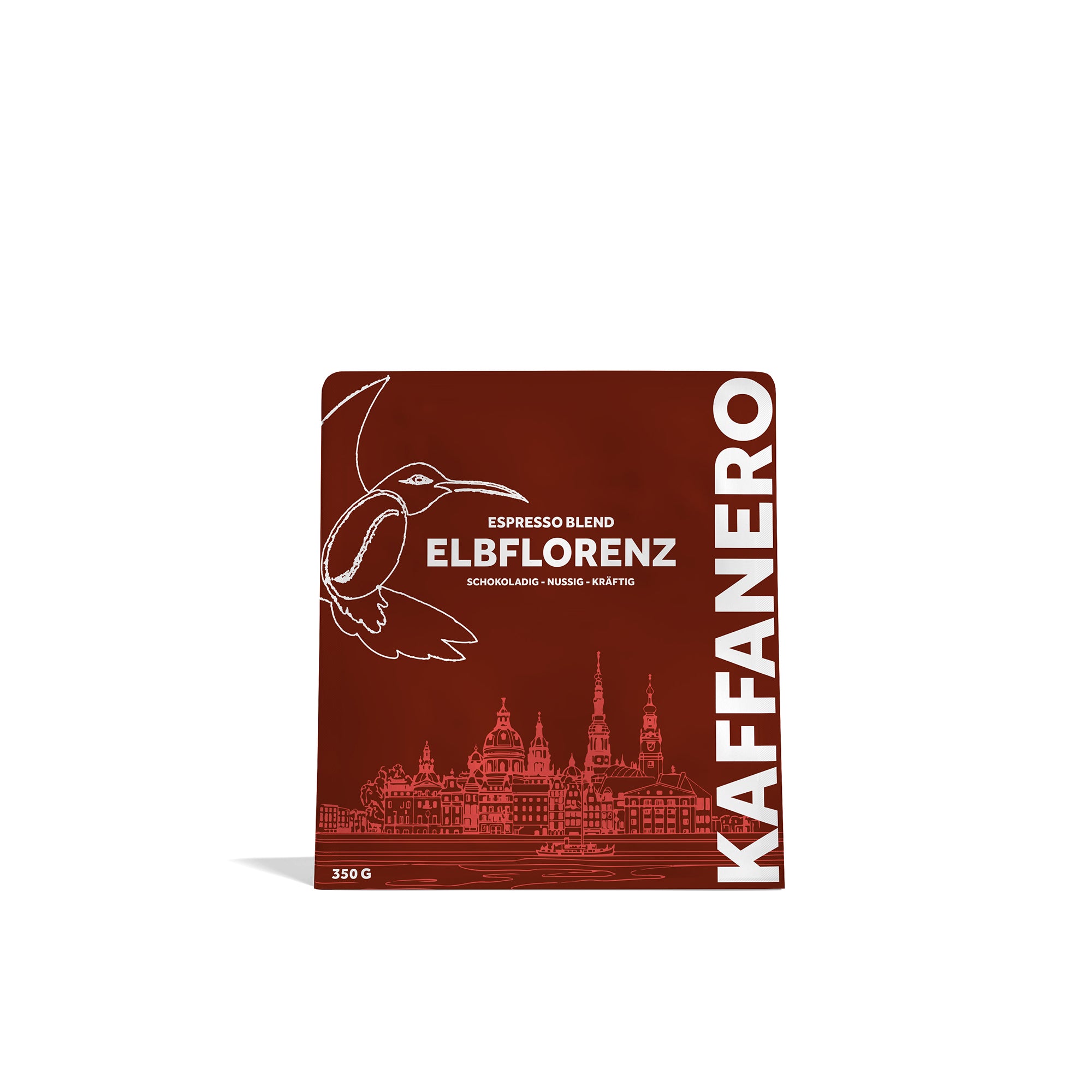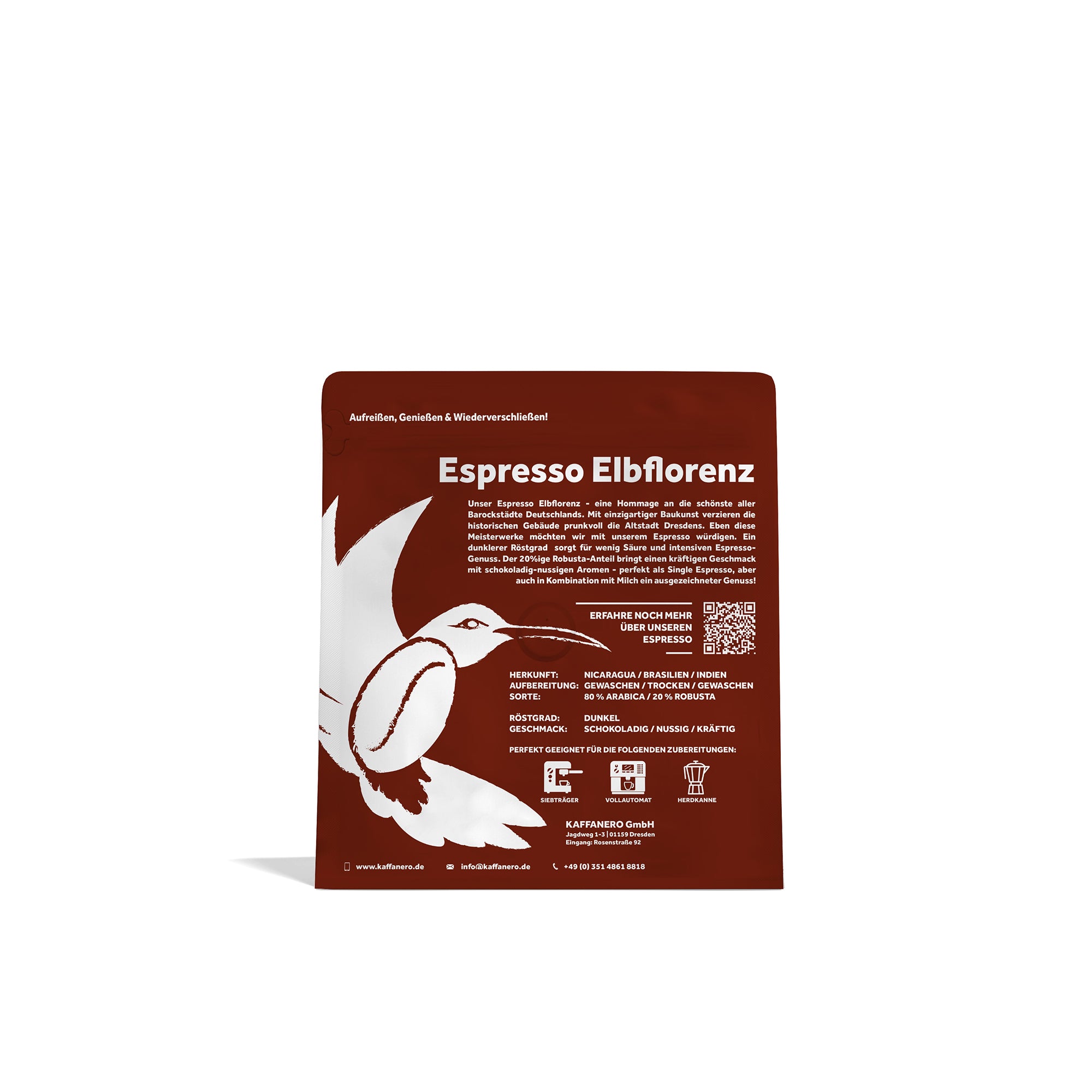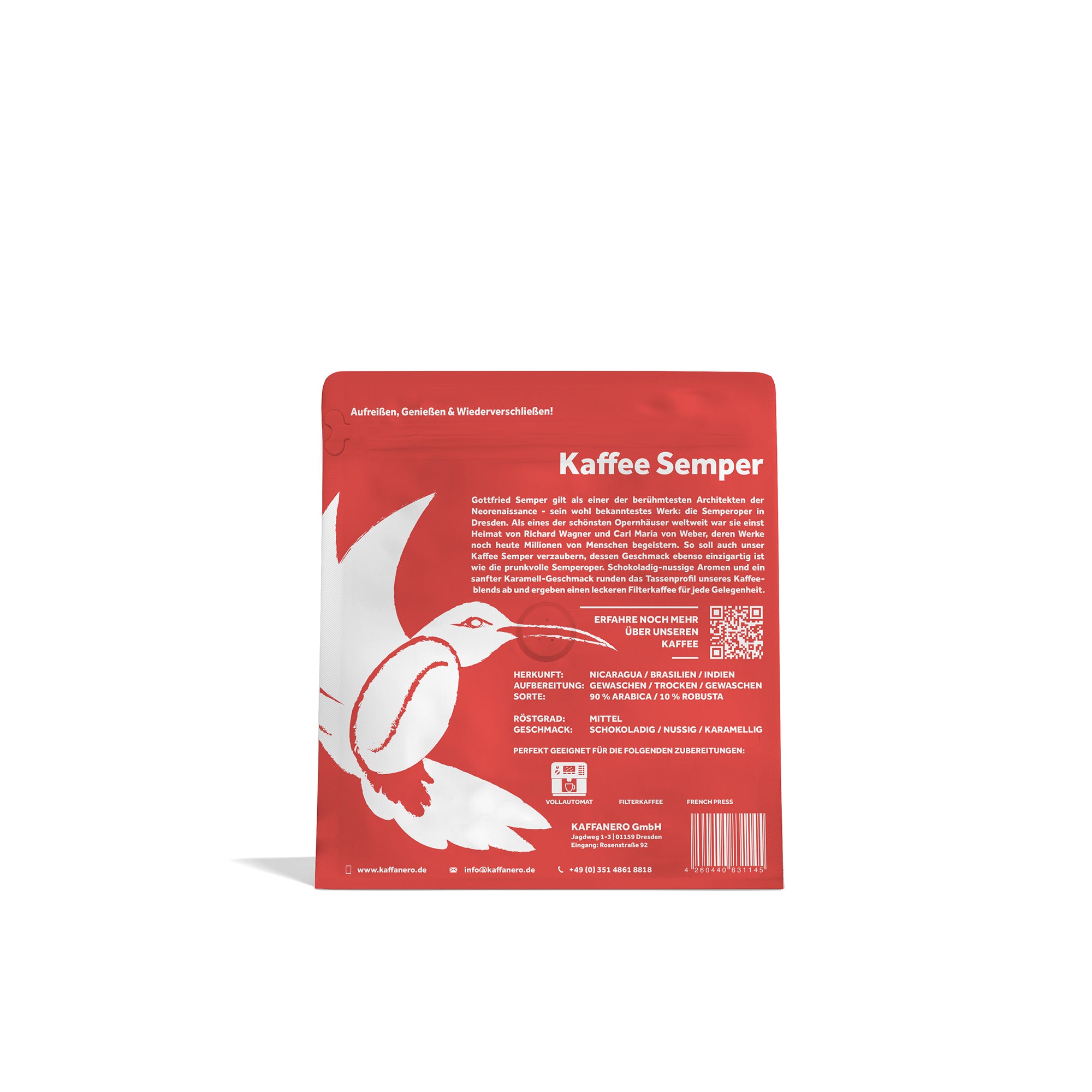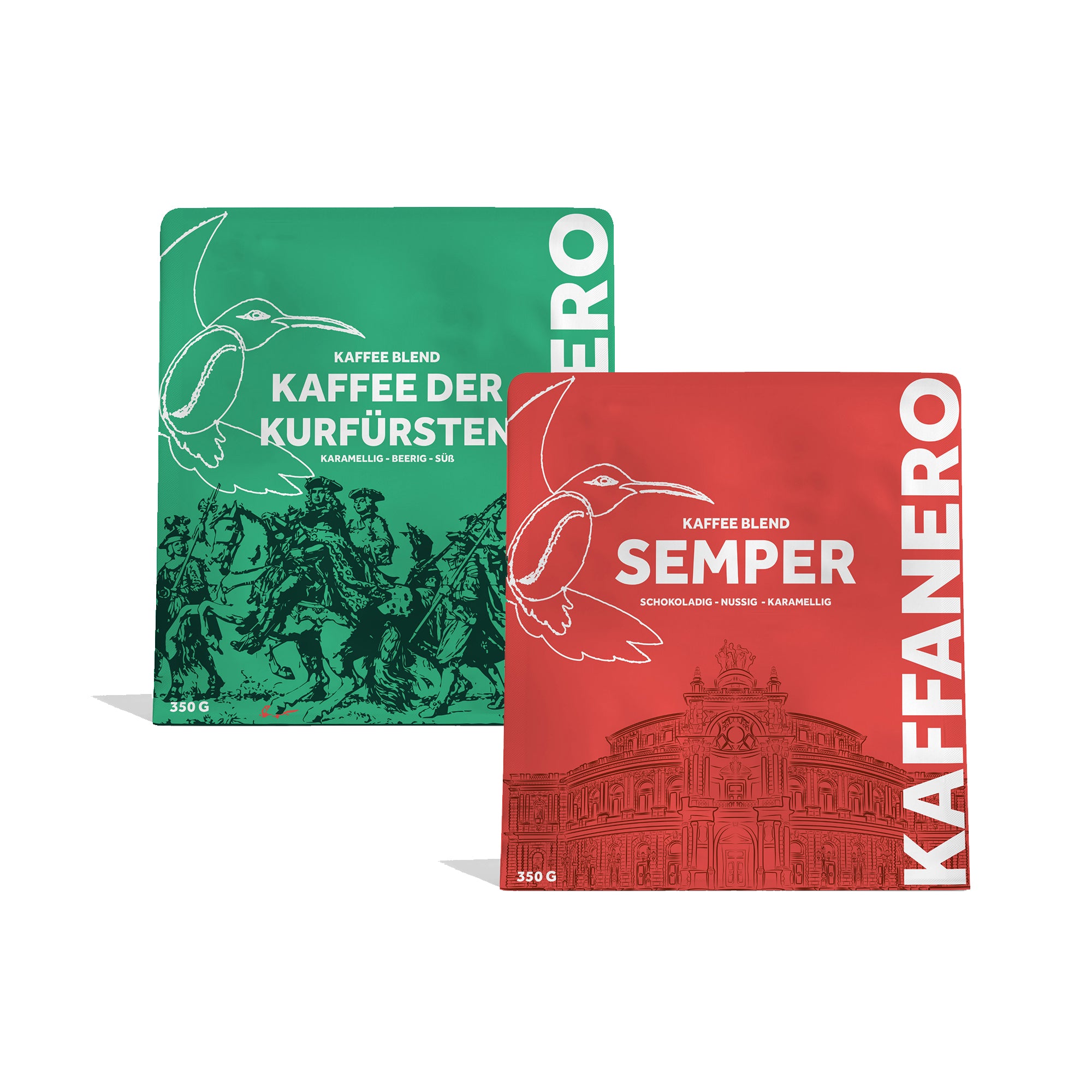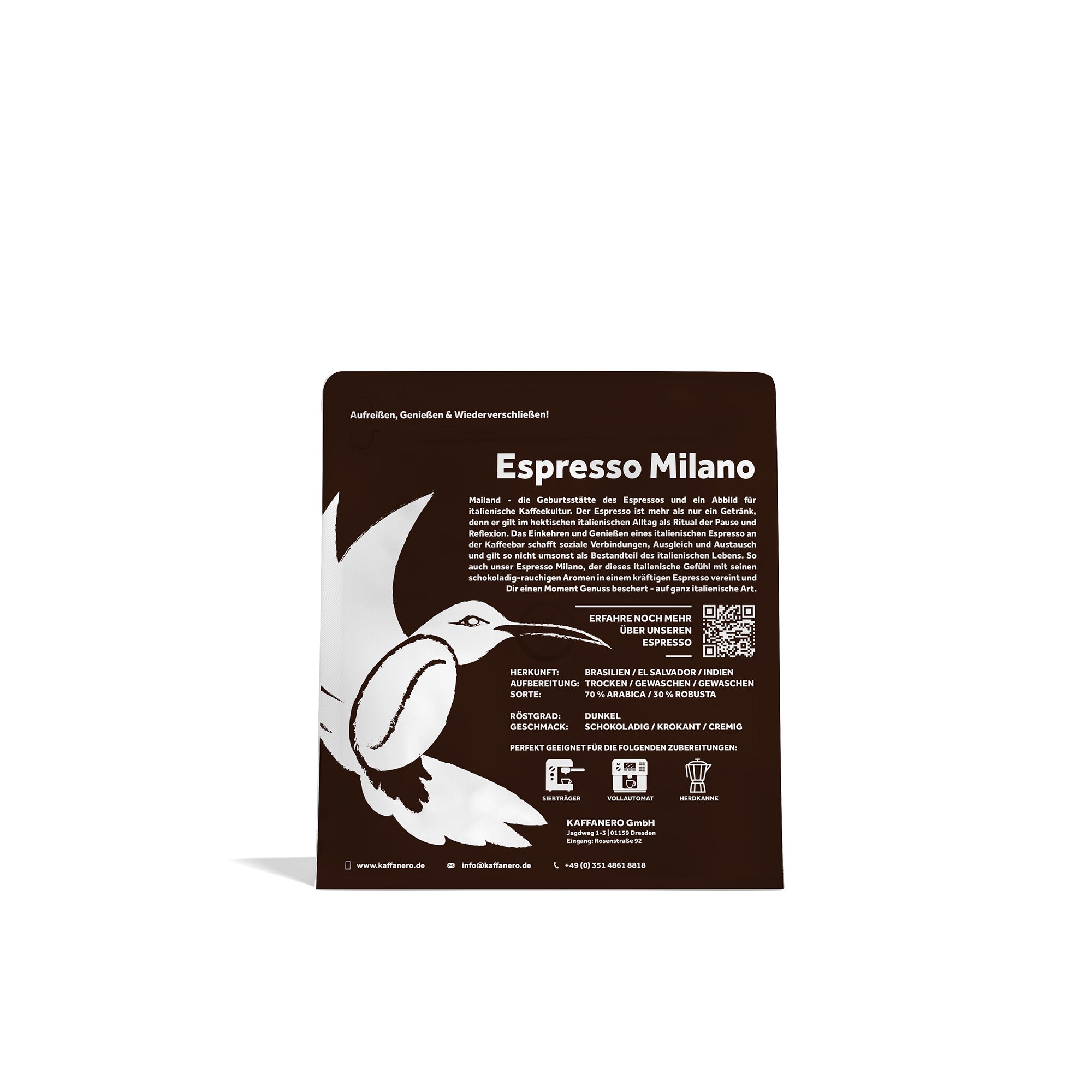Coffee delights with its diversity: sometimes it tastes fruity and bright, sometimes nutty and heavy, sometimes floral, sometimes chocolatey. Many coffee lovers now know how strongly factors such as origin, processing, or preparation method influence the taste. But what is often underestimated: roasting is the heart of the entire process.
After all, even the best green coffee remains aromatically undeveloped without proper roasting – and conversely, precise roasting can bring out a surprising amount of flavor even in unassuming beans. Roasting plays a key role in determining which aromas are ultimately noticeable in the cup, how clear or full-bodied the coffee tastes, how acidic it is, and whether it's suitable for filter or espresso.
In this article we open the door to the roastery for you:
- How does a modern roasting process work – and why do we rely on induction and hot air circulation?
- What are roast profiles, and how does software like Cropster help us develop each coffee optimally?
- What is the difference between filter roasting and espresso roasting, and what actually happens after roasting?
We'll show you step by step what really happens during roasting—technically, sensorially, and in terms of taste. Because the better you understand what happens in the roasting drum, the more you'll appreciate the coffee in your cup.
How is coffee roasted?
Coffee roasting is a thermal process: green coffee is transformed into an aromatic, roasted bean using heat. The bean goes through several stages in which its structure, color, volume, and, of course, flavor change.
The bean loses water, expands, undergoes chemical reactions (e.g. Maillard reaction and caramelization) and reaches the so-called first crack at around 200-220 °C - an audible cracking sound that marks the beginning of the roasting phase in which the typical aromas develop.
The goal: a roast that is as even as possible, which brings out the bean's potential to its full potential.

Roasting with induction – efficient, precise, gentle
In our roastery, we use an induction-powered roasting oven with hot air circulation—a modern, sustainable, and extremely precise technology that is increasingly complementing or replacing traditional gas-fired drum roasters. What at first glance sounds like a technical gimmick has tangible advantages for the quality and consistency of our coffees.
What does induction roasting mean?
Unlike traditional gas roasting, induction roasting doesn't generate heat through an open flame, but rather uses electromagnetic fields directly in a metallic heating surface. This surface is located beneath the rotating roasting drum or is directly connected to it. Heat transfer is fast, precisely controllable, and highly responsive.
This means specifically :
- Temperature changes affect the beans immediately – without delay like with gas
- Finest adjustments in real time are possible (e.g. if a coffee reacts to heat faster than expected)
- The roasting master has complete control over the entire thermal process
Uniformity through hot air circulation
In addition to induction, our roaster features an integrated hot air system that continuously blows hot air through the drum during the roasting process. This air is not only tempered but also circulated in a targeted and controlled manner.
The advantages:
- Each bean is evenly surrounded by hot air, regardless of where it is located in the drum
- There are no heat spots like with flame roasters, which can roast beans unevenly
- The gentle, constant movement minimizes the risk of burns or undercooking
The beans themselves are in constant rotation, being turned, thrown and mixed – an ideal prerequisite for a homogeneous roast in which each individual bean can develop the same aromatic potential.
Why we rely on induction – the advantages at a glance
The combination of induction and hot air circulation offers us clear advantages, both from a sensory and ecological point of view:
-
Constant temperature control
The induction reacts directly to control impulses, so that the target temperature can be precisely maintained or adjusted – this is essential, especially in sensitive phases such as drying, Maillard reaction or development time (development after first crack). -
Less energy consumption
Induction is significantly more efficient than gas – energy is generated directly where it's needed without any detours. Furthermore, there's no need to heat up burners or baking trays, saving energy roast after roast. -
Reduced emissions
No gas means no open flames and no CO₂ emissions from combustion. Induction roasting is therefore a more sustainable process, with a significantly better environmental impact, especially when roasted frequently. -
Highest reproducibility
Combined with Cropster Tracking, every roasting profile can be precisely repeated – whether for 1 kg or 10 kg batches. Temperature jumps, time stamps, energy input: Everything is measurable, controllable, and documented. This is especially important when a coffee should taste the same every time – and customers rely on consistency.
Roasting Profiles & Cropster: Understanding Coffee Digitally
A roasting profile describes the temporal progression of temperature and energy input during the roasting process. It is the "recipe" for each individual bean – and directly influences the flavor.
We track all roasts with Cropster, a professional roast logging software. It measures:
- Bean temperature (BT)
- Ambient temperature (ET)
- Rate of Rise (RoR) – how quickly the temperature changes
- Time stamps such as first crack, development time, roasting time
Tracking allows us to make each roast reproducible – and adjust it as needed. This ensures consistent quality, even with changing raw beans or seasons.
Coffee roasting vs. espresso roasting – what’s the difference?
Even though the beans often look the same, filter and espresso roasts differ significantly – in terms of duration, temperature and desired aroma.

Filter coffee roasting:
- Light roast
- Goal: Preserve fruity, floral aromas
- Roasting time: approx. 9–11 minutes
- Ends usually shortly after the first crack
Espresso roasting:
- Dark roast
- Goal: More body, less acidity, roasted aromas
- Roasting time: approx. 12–14 minutes
- Often in the area between first and second crack
The first crack is the point at which the bean audibly bursts open—comparable to popcorn. The second crack is a deeper, finer cracking sound and marks the beginning of the significantly darker roast range. For espresso, we roast closer to the second crack—but without slipping into burnt.
Cooling & stoning – what happens after roasting
After roasting, the coffee is still over 200 °C hot – and must be cooled immediately to prevent the roasting process from continuing uncontrolled.
We cool the beans in an integrated cooling system with air extraction. This allows us to reach room temperature within minutes – gently and without loss of flavor.

The coffee is then passed through a destoner. This removes foreign matter such as small stones or metal fragments that may have become embedded in the beans during harvesting. This is important not only for the quality but also for the safety of your grinder.
Outgassing – why freshly roasted coffee still has to wait
Freshly roasted coffee may look ready, but it's not yet ready to drink. During the roasting process, gases—primarily CO₂—are released and trapped in the beans. In the first few hours after roasting, the coffee visibly outgasses.
That's why we let our coffees rest for at least 48–72 hours before packaging or selling them. Some coffees—especially espresso roasts—even benefit from a rest period of 5–10 days.
Why is this important?
- The CO₂ can disrupt the brewing process (e.g. uneven extraction)
- The aromas develop more harmoniously and roundly
- The coffee is more stable and easier to dose
A well-rested coffee has a more balanced cup profile – and that's exactly what roasting is all about: getting the best out of the bean.
Conclusion: The art of coffee roasting – more than heat and color
Anyone who has ever seen how coffee is roasted understands: This is not an automatic process, but a highly precise craft in which experience, technology and sensory perception come together.
Each bean has its own unique potential – its origin, processing, and variety define what's possible. But whether this potential is evident in the cup ultimately depends on the roasting process. This is precisely where the green coffee is refined: Aroma components emerge, acidity is reduced or increased, sweetness develops, and roasted aromas shape the character.
In our roastery, we rely on modern induction technology, precise control by Cropster, and carefully designed roasting profiles. Why? Because we don't just want "even roasting"—we want coffees that delight with their authenticity and clear flavor.
Even the seemingly unspectacular part after roasting—cooling, stoning, and degassing—is crucial. This is where it's determined whether the coffee remains stable, tastes clean, and the desired aroma profile reaches your cup.
A good roast doesn't simply mean "light" or "dark." It means roasting the coffee the way it deserves—adapted to its origin, processing, and subsequent preparation. Filter roasts bring complexity and freshness to the cup, while espresso roasts concentrate depth and body. Both require care and sensitivity.
Anyone who drinks coffee mindfully will notice: the difference isn't subtle—it's fundamental. And the more you understand about roasting, the more you appreciate what goes into each individual bean.
Roasting is science. Roasting is intuition. And above all, roasting is the art of getting the best out of a good bean.

